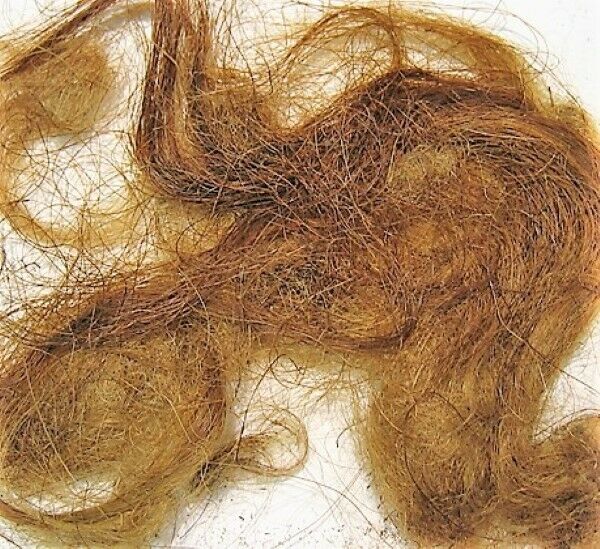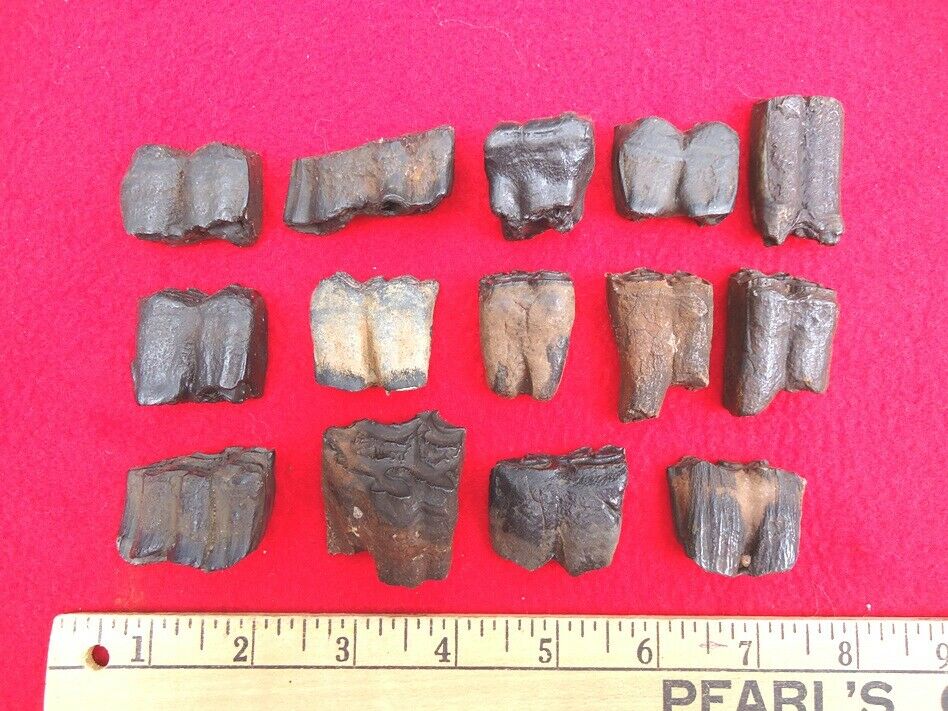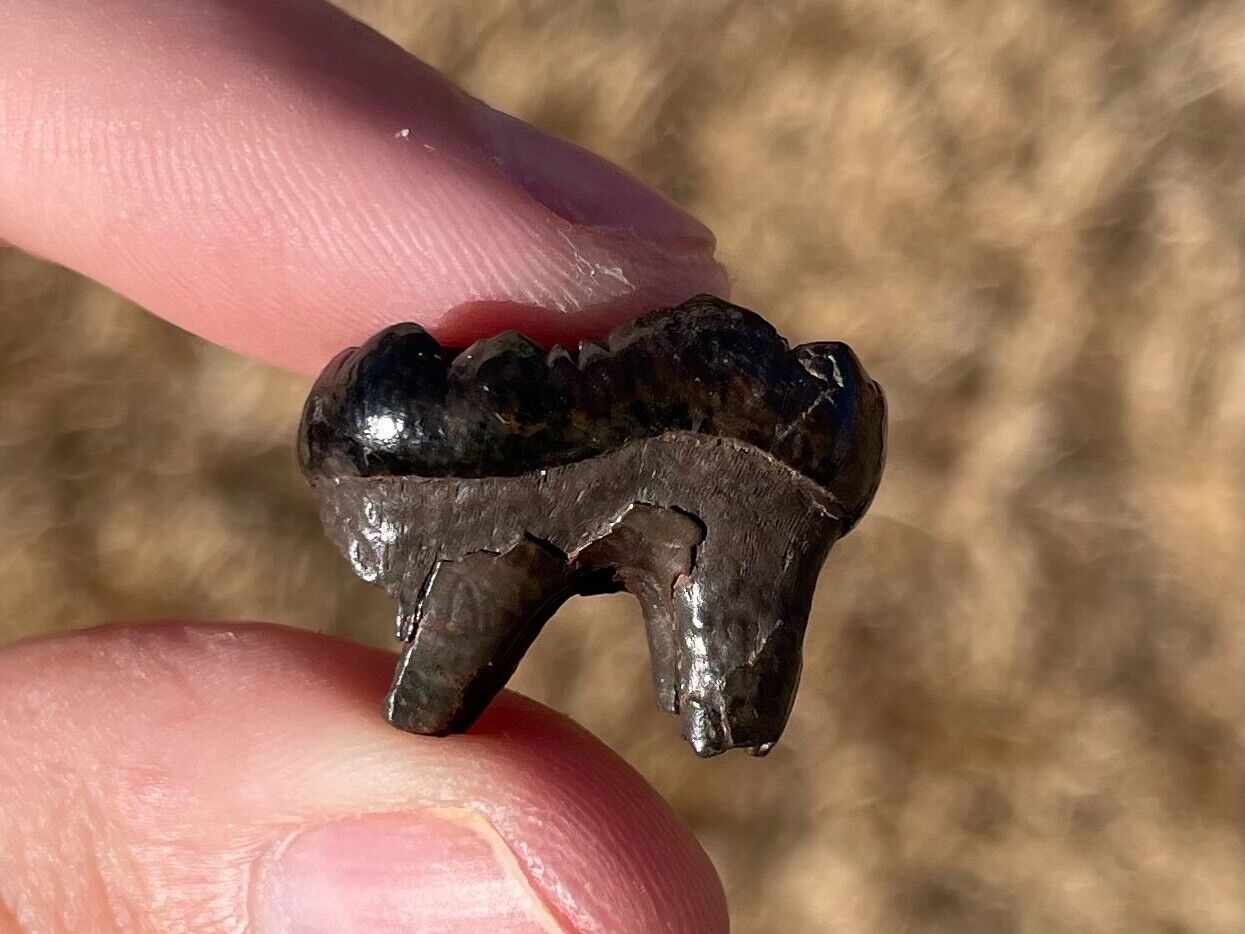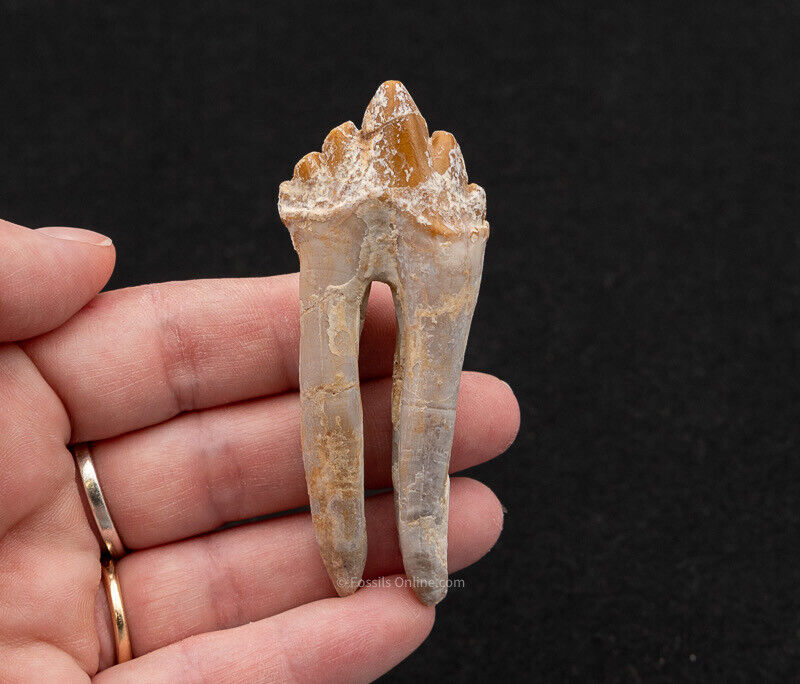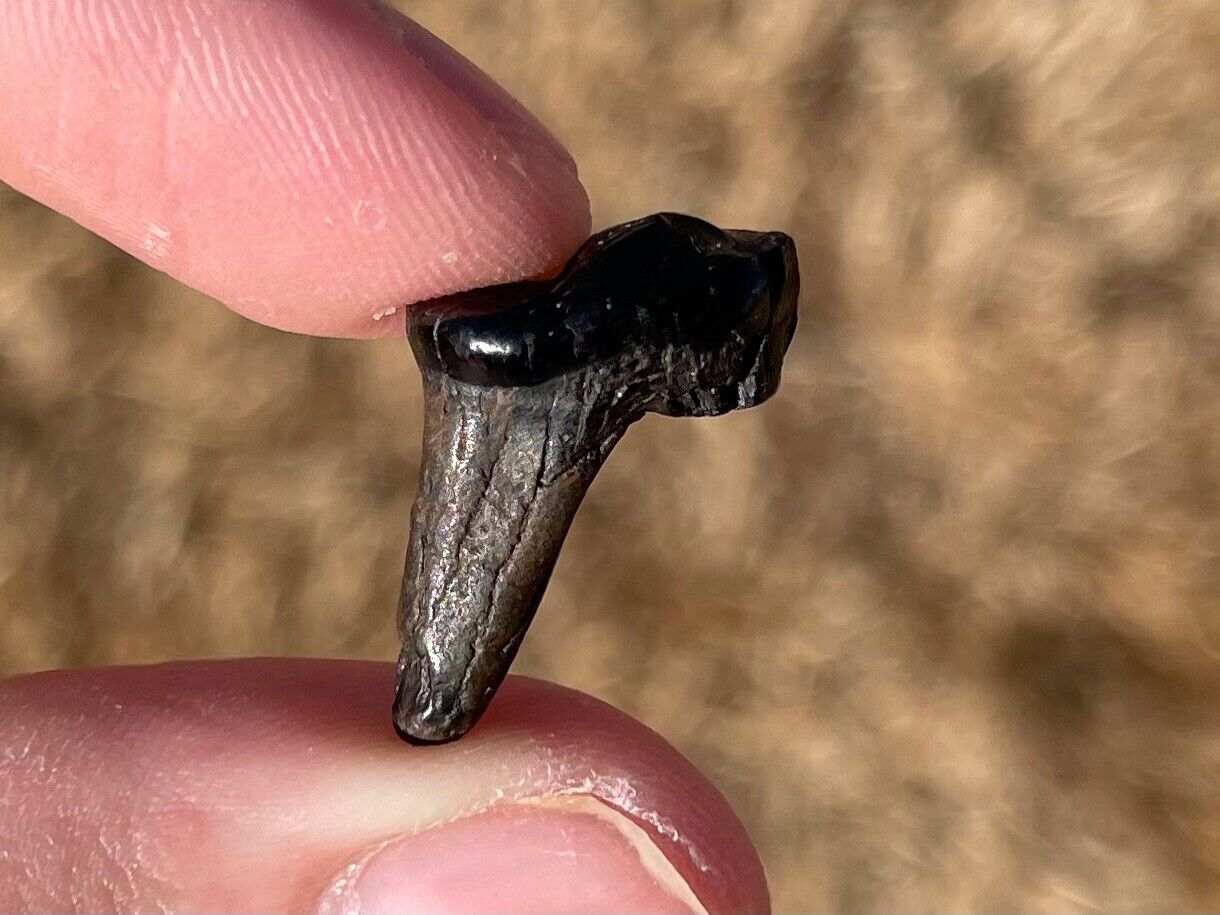-40%
Hyracodon Jaw Section, Fossil, Early Rhinoceros, Badlands, Oligocene, SD, R835
$ 7.36
- Description
- Size Guide
Description
Type: Excellent fossil jaw section from the Running Rhinoceros,Hyracodon nebraskensis
.
Locality: Private land in Pennington County, South Dakota
Age: Oligocene, 30 Million Years Ago
Read below pictures for information about this specimen and the area it was found.
Note: Ruler increments are 1/16 inch.
Hyracodons and Subhyracodons
Early rhinoceros
The discovery of rhinoceros in the Badlands of the American West was very exciting, most people never suspecting that such primitive forms of rhinoceros existed in North America. Today, living rhinoceroses consist of four genera that contain five species. Two are found in Africa; three others are restricted to Asia. Most are browsing animals but the largest species, the white rhinoceros of Africa, is a grazer. All living species possess "horns" that are composed of keratinized hair which decomposes at death and are not normally preserved in the fossil record. Although most New World rhinoceroses did not have horns, the widely distributed, males of the pig-sized Menoceros of the early Miocene had a lateral pair of horns. In North America, "rhinoceroses" of three similar lineages appeared from Asia during the Middle Eocene. Consisting of hippo-like Amynodontidae, "running rhinos" or Hyracodontidae, and true rhinoceroses, Rhinocerotidae, only true rhinoceroses adapted and diversified enough to survive into the early Pliocene.
Amynodontids entered North America during the Bridgerian NALMA. Apparently adapted for a warm humid environment typified by lush forests, most amynodontids physically and ecologically resembled the hippopotamus of Africa. Remaining undiversified, only four genera are recognized and three of them contain but a single species. The massive and best known species is Metamynodon planifrons, a form characterized by having massive teeth with large tusks that give it the appearance of a hippopotamus. Some skeletons were 10 ft in length. Due to their skull structure, some believe this group supported a proboscis similar to that of a modern tapir.
The only genus of amnynodontid to survive into the Oligocene was Metamynodon, the onset of seasonality and general opening of habitats caused by increased aridity eliminating other members of this family. Metamynodon is a rare component of late Eocene formations and is only common in channel sand stones of late formations of South Dakota. Although it should be present in green channel sandstone formations of eastern Wyoming, none have been recorded there.
Hyracodontids, best know in North America in the form of Hyracodon nebraskensis, may be found from the late Unitan of the late Eocene to the Arikareean NALMA of the middle Oligocene. All were cursorial, sheep-sized mammals reaching 5 ft in length with a light chest and long legs for running. Hyracodons had no horns, thus giving them a horse-like appearance, hence the common name "running rhino".
Distantly related to the gigantic Paraceratherium of Asia, hyracodons were primitive browsers possessing simple dentitions that roamed in localized herds within the open forest and savannah. Migrating freely between North America and Asia during the Eocene, all genera but one, Hyracodon, disappeared by the end of the Chadronian. Hyracodon is distinguished from earlier genera by its longer limbs, and its ecological niche is sometimes compared to that of African equids or bovids. All species of this Family disappeared in the early Arikareean NALMA, probably because of the increased aridity that affected many other persistent White River faunas at the end of the Whitneyan NALMA and the appearance of modern grasses.
In North America, the Rhinocerotidae or true rhinos were one of the most successful groups of large mammals and following the extinction of the brontotheres, were one of the largest land mammals found on the continent until the arrival of proboscideans. Early rhinoceroses of the Badlands were hornless; many forms had four toes. Living species all have horns and only three functional toes. The largest and most common rhinoceros of the diceratherine rhinos of this family was Subhyracodon occidentalis, a species closely related to modern rhinos that was much larger and heavier that other rhinos of this subfamily. Subhyracodon measured 8 feet long in length and was the size of a modern tapir.
Diversifying ecologically, early forms such as Subhyracodon have browsing dentition and were more common in near-stream locations rather than on swampy plains, and are absent from open, more arid locations.
Overall, Chadronian rhinoceroses included four genera, Subhyracodon, Pentetrigonias, Trigonias, and Amphicaenops. All four taxa became dwarfed and disappeared in the face of reduced forest habitat but new invaders from Asia filled the void, allowing other genera or rhinoceros to continue to occupy the large-bodied herbivorous niches of North America from late Eocene through beginning of the Pliocene. Because grasses were not essentially present during most of the early to mid-Cenozoic, there was no ecomorph of the white rhinoceros during that period in North America.
Written by R.C.




